And There’s Army Stupid
August 21st, 2007 by xformed
Don’t stop before it ends…it’s not what you might think it is.
H/T: Neptunus Lex reader ASM826.
Category: Humor, Military, Supporting the Troops | 1 Comment »
August 21st, 2007 by xformed
Don’t stop before it ends…it’s not what you might think it is.
H/T: Neptunus Lex reader ASM826.
Category: Humor, Military, Supporting the Troops | 1 Comment »
August 20th, 2007 by xformed
Today will not be devoted to some hero who had a ship named after them, but rather to a particularly American tree that made a difference in our early history. Yesterday, I posted about the famed battle between the USS CONSTITUTION under Captain Issac Hull and the HMS Guerrière commanded by Captain James Dacres. That 25 minute battle, resulting in an astonishing one sided victory for the American Navy was, in part, due to the foresight of the US Navy’s first shipwright, Joshua Humphreys (who’s story led off this series of Monday postings).
Quercus virginiana, better known as “Live Oak,” was a specific ingredient in the building of our first six warships.
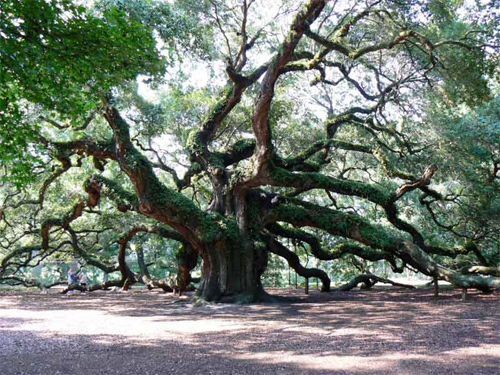
The tree, which is a live oak, Quercus virginiana, a species prevalent in the sea islands of South Carolina, is 65 feet high and has a circumference of 25 feet. While its height may not be impressive, the shaded area covered by its foliage extends over 17,000 square feet, making it a delightful place to catch some shade in the summer months.
One of its largest limbs is 89 feet long, with a circumference of 11.5 feet.
[…]
Why this type of wood for our ships? According to the research of Ian Toll, author of “Six Frigates,” it has to do with it’s strength, resistance to salt water, weight per cubic foot up to 75lbs, among other fine qualities:
Humphreys was exacting in his specifications. The beams and decks would be made of Carolina Pine, he wrote, and the planks of red ceder. But most important,-here he was both explicit and insistent-key pieces of the frame, including the futocks, knight heads, hawse pieces, bow timbers, stanchions, knees, transoms, and breasthooks, must be made of live oak.
So where does one get this wood? Along the coasts of the US, from Virginia to eastern Texas. What type of coast line does this mean? Swamps….mud that sucks leg into the ankle or knee when it’s nice and wet. Mosquitoes, and all sorts of others vermin that make men deathly ill in the living conditions of the late 1700’s. But, as we know, it made it’s way into the ships.
“Moulds,” that were actually full sized models of the finished pieces were laid out at the building yard from light wooden battens. These models were taken into the swamps to determine which trees would yield a match to each model.
Getting these trees became an monumental task. First to strike out in August 1794 to the coast of Georgia was a Boston shipwright named John T. Morgan. His hopes were to then be assigned as one of the master constructors. All support would have to come the camp by sea and soon, no wood was collected and most of the party was disabled with disease, most likely malaria. Soon, no amount of money could entice the workers, of the original 90 from New England, who had not died to remain.
in late October, Captain John Barry proceeded to Georgia to assess the situation. He found the camp inhabited by sick men. He sent for reinforcements. Slaves from the local area were used to help clear a road to the best timber and work commenced. The trunks and branches were floated and/or drug from the swamps by teams of oxen and did eventually get to Philadelphia, albeit 6 months late for the work schedule.
While this wood is an excellent material for ships at sea, it is not what ship’s caprenters like to see hauled into the building yards. From “Six Frigates:”
BUt the shipyard workers also dreaded the extra work it took to cut, shape and manipulate live oak, and they rolled their eyes whenever a new load of raw timber sections was brought into the yard. A nail driven into it was nearly impossible to extract. Axes bounced off it and saws moved back and forth across it again and again, making little or no discernable progress. Nothing took the shaprness out of a ship carpenter’s tools as quickly as well seasoned live oak.
So, there is a salute to another American resource, this time a natural and not human one, that earned the USS CONSTITUTION the nickname “Old Ironsides.”
I had often wondered about this, as I was homeported in Charleston in September 1989 when Hurricane Hugo devastated the area. I recall there were a number of large live oaks that the storm toppled, mostly due to the wet ground, that no longer afforded a secure hold for the roots. The comments in the news reports were the salvaged limbs and trunks would be useful in maintaining old sailing ships, the complete significance I did not understand until reading “Six Frigates,” and finding the story of the decisions and the effort to get this type of wood for ship construction.
Category: History, Maritime Matters, Military, Military History, Navy, Technology | 4 Comments »
August 19th, 2007 by xformed
On this date 195 years ago, a historical naval battle took place, which spawned a legendary nickname for one of the first warships built in the course of our nation’s history: “Old Ironsides.”
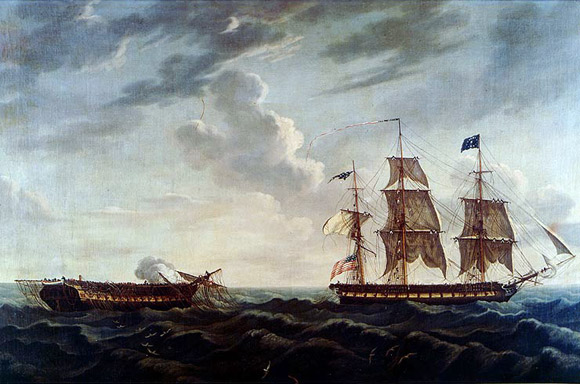
Double shotted loads spoke in a single thunderous voice from the side of CONSTITUTION, and the entire structure of the ship shook from the blast, and the crew gave a triple cheer that was clearly heard aboard HMS Guerrière. The result of this fire discipline? When the smoke cleared, the HMS Guerrière’s mizzenmast had ruptured just above the main deck and falling into the sea and the mainyards were shot away, taking the sails, too. The American sailors gave another triple cheer.
It was in this interval, when an American sailor saw a British 18lb cannon ball bounce off the Ship’s side and said “her sides are made of iron!” The nickname for the USS CONSTITUTION was born.
Captain Hull maneuvers his vessel into position, providing the Marine sharpshooters the opportunity to fire at the confused British crew, then a second, close range broadside was loosed with the same fury against the enemy. The ships closed and became entangled, and boarding parties was called for. Stern chasers and bow guns were employed at close range, and the CONSTITUTION’s main batteries could still fire into the HMS Guerrière. The heaving and plunging of the heavy seas finally tore the ship’s loose from each other.
The HMS Guerrière was dismasted and most of her officer’s out of action, dead or wounded. Captain Dacres struck his colors at 6:30PM.
In 25 minutes, the US Navy won a victory, aided and abetted by the foresight of Joshua Humphreys. How? That will be the subject of tomorrow’s Monday Maritime Matters post.
This account was derived from the book “Six Frigates” by Ian Toll. The details of the battle covered there are presented in far greater detail.
In the mean time, the Historical Naval Ships Association site for the USS CONSTITUTION is here. Points of interest there include that the below poem by Oliver Wendell Holmes kept her from the scrap yards in 1830, and the money of school children collected in 1927 restored her to her 1812 condition.
Old Ironsides
Ay, tear her tattered ensign down!
Long has it waved on high,
And many an eye has danced to see
That banner in the sky;
Beneath it rung the battle shout,
And burst the cannon’s roar; —
The meteor of the ocean air
Shall sweep the clouds no more.
Her deck, once red with heroes’ blood,
Where knelt the vanquished foe,
When winds were hurrying o’er the flood,
And waves were white below,
No more shall feel the victor’s tread,
Or know the conquered knee; —
The harpies of the shore shall pluck
The eagle of the sea!Oh, better that her shattered hulk
Should sink beneath the wave;
Her thunders shook the mighty deep,
And there should be her grave;
Nail to the mast her holy flag,
Set every threadbare sail,
And give her to the god of storms,
The lightning and the gale!
Another website found while researching this material was The Captain’s Clerk, a site set up as “an archive specifically created to contain historically accurate stories and other information on that fabled frigate, the USS Constitution (“Old Ironsides”).”
Come back tomorrow to read how another field of my academic background is put to use to tell more of this story!
Category: Marines, Maritime Matters, Military, Military History, Navy, Technology | 3 Comments »
August 17th, 2007 by xformed
I found the Global Defense Group blog via a comment on Acute Politics (written by an Active Duty Soldier currently completing his tour in Iraq). Scanning the GDG site quickly, it looks like there’s some interesting posts on three, and also I noted they are looking for help, in the form of authors and other technical support.
Contributors are the key to the success of Global Defense Group.
It is the members of the community who bring this site to life, and without the contributors GDG would be little more than a bunch of buttons on a web page.
GDG is always on the prowl for qualified “authors”, and if you have experience in any of the following areas, we encourage you to contact us about becoming a contributor to the blogs, databases or media archives:* Terrorism and Counter-Terrorism
* Cyber-Terrorism, Hacking and Internet Security
* Domestic Politics and, in particular, Political Activism
* Military/Insurgency Tactics and Military History
* Homeland Security and Law Enforcement
* Digital Video/Audio/Podcast Production
* Border Security and Illegal Immigration
* Diplomacy and International Law
* WMD and Nuclear Proliferation
* Islam and The Q’uran (Arabic and Farsi translators wanted!)
* The Constitution and United States Law
* Political Satire and Political Cartooning
* Global Economics and The Oil Industry
* Middle East History and the Israeli-Palestinian ConflictIn addition to the specialized fields listed above, GDG is also looking for dedicated individuals to help with the daily operations of the site. While these people will not be in “the lime light”, their contributions will be essential for the efficient and continued operation of the site.
Some of these areas are:* Maintaining the Events Calendar
* Research and Documentation
* Forum and Chat Room Moderation
* Maintaining Image and Video Archives
* Site Promotion and Recruitment
* Coordination and Correspondence
* Video and Podcast Production
* Editing and Publishing
* Legal Protection
* More Research and DocumentationThe individuals who perform these tasks will be given “Author” access or higher, depending upon the access required for each job. Members will be selected to fill these important roles based on a variety of factors, including availability, expertise, and an ability to work and communicate with others.
Sounds like some of the readers here might be able to lend a hand over there….
Also: Don’t miss Teflon Don’s (Acute Politics Blogger) short but wonderfully written post: Beauty in the Dirt. He has a way with words to rival some of the best novelists, yet he speaks about the real world around him…
Category: Blogging, Geo-Political, History, Military, Military History, Political, Supporting the Troops | Comments Off on Global Defense Group Blog
August 17th, 2007 by xformed
SJS sends another photo, taken on his wanderings, for our analysis. I guess it’s supposed to be as plain as the nose (wheel) (on) in our face, right?
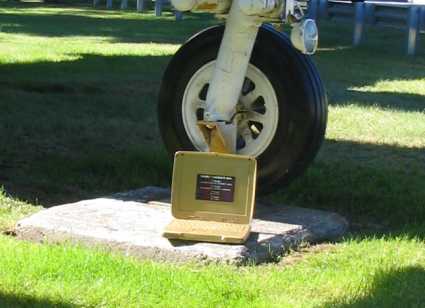
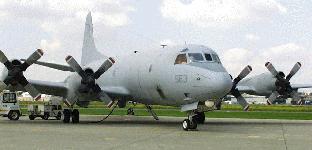
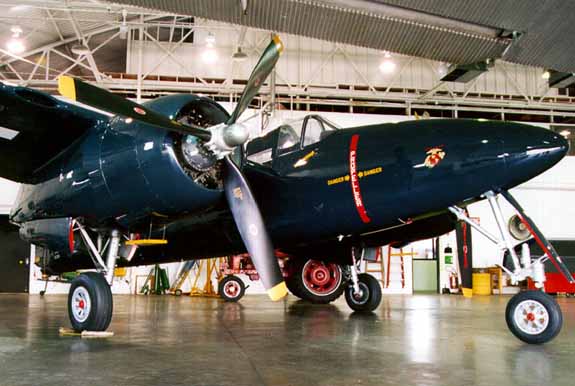
Update 8/19/2007: SJS couldn’t take it anymore….he gave the answer in the comments section…It’s a P-2V Neptune….and it was at NAS Brunswick. ME.
Category: Charities, Valour-IT, Where's MEGEN? | 8 Comments »
August 16th, 2007 by xformed
Steeljaw Scribe is on “vacation.” He not only graciously took his family along, but MEGEN of ValOUR-IT fame is being taken on a leisurely ride around the north east of this great Nation.
Now, besides getting pics of MEGEN along the way, he left his blog in the hands of some rather “youthful” writers, who are acting like teenagers left behind at home when Mom and Dad go out of town. You know, they ask all their surly friends over and begin defacing the place with abandon, while making derisive remarks about the advanced age of a retired Naval Captain. Take a look at the quality of SJS’ “apprentices” to get my drift. They aren’t hard to find. Maybe they’ll get a trip to the woodshed upon the “Old Man’s” return…
In the meantime, SJS forwarded these picture via email, from a located business center where he was on the 14th of August, with the question: “NOW Where’s MEGEN?” The single text based hint is “it ain’t in NoVA… ;).”
I don’t recognize much more than the machinery room, most likely in a basement, near a diesel generator. How about the rest of you? I can assume (and we all know what that means) it’s related to something Naval in origin…
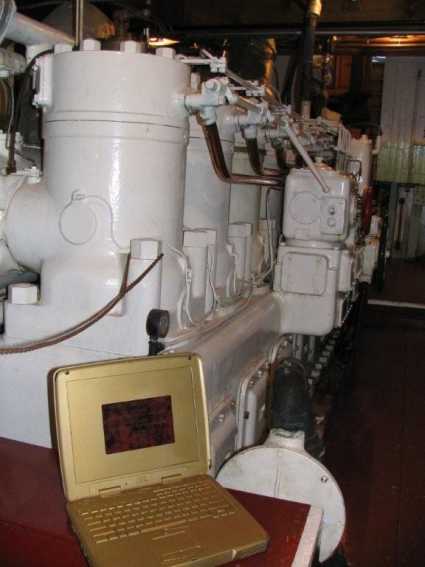
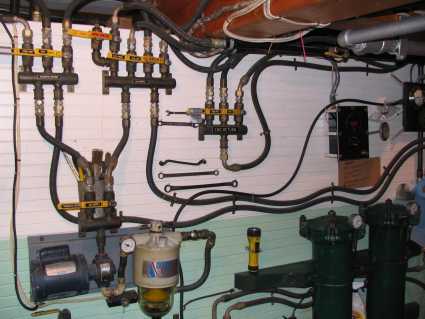
It seems SJS continues to tell his best friend he’s going out for ice, but then comes back with the mostly liquid version after visitng the business center of the temporary lodgings…but he has informed us the SJBill is the one who figured out the location of the picture:
SJBill | [email protected] | IP: 75.35.74.155
Howabout up in Maine? Mebbe the FV Sherman Zwicker? The schooner was built in Nova Scotia back in the 40s.
-SJBill
Aug 17, 10:27 PM
BZ, SJBill, for the refined eye needed to figure it out….
Here’s the “award” statement, with added context of the place where MEGEN was:
Steeljaw Scribe | [email protected] | steeljawscribe.com | IP: 71.114.62.189
…and SJBill wins the ceegar! 🙂 The one and the same, built in Lunenburg at the same shipyard that built the famed (and my personal favorite) Bluenose and Bluenose II fishing schooner. The Zwicker is part of the exhibit at the Maine Maritime Museum and from which, you can see the latest Arleigh Burke DDG being built in drydock over at Bath Iron Works.
-SJSAug 18, 7:23 AM
Note the time stamp…I hate to think what he’ll be using the ice for this early in the morning…maybe to awake the younger generation from their “they need their sleep” sleep.
Category: Charities, Military, Supporting the Troops, Valour-IT, Where's MEGEN? | 7 Comments »
August 15th, 2007 by xformed
I can hear it now, a new parody song for NASA’s shuttle crews:
“Ground Control to Major Tom:
“Go out there and put some Duct Tape on”
You can work on the rest of the replacement lyrics yourself. You also can get credit for preforming it on YouTube.

I’m thinking it might not be such a silly idea to see if you can make a spacesuit and integrated lifesaving parachute for future Shuttle flights, but then again, I know how much fun freefall really is. Now that I think about it, in WWI, only the Germans supplied their air crews with parachutes, with the Allies believing that, once so equipped, pilots would rather jump than work to get the plane back to home plate. Oh, how wrong they were in that assessment.
If you’d like some real data on the STS-118 “issue,” check this page out to see several videos of the damage.
Category: History, Military History, Physics, Science, Skydiving, Technology | Comments Off on Hope the Packup Included This
August 15th, 2007 by xformed
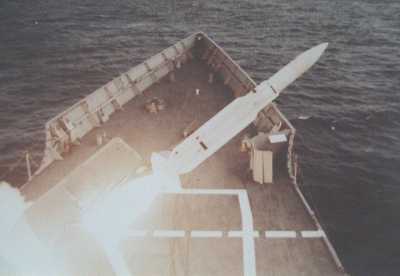
So, last Wednesday, there I had been, dangling over the deck of the USS JOHN KING (DDG-3), with the possibility of being bait for the helo pilots to go fishing, but it ended well…They caught no sharks, and I got on deck with nothing more than some sea spray from the rotor wash getting me wet.
So, safely aboard, but still merely an Ensign and not yet qualified as a Surface Warfare Officer, I was to be an exercise observer for the KING’s missile shot. I was taken to the bridge and introduced to the Captain, then taken to Combat Information Center (CIC), from where I would observe the operation, in order to fill out the form and determine the grade to assign.
USS JOHN KING (DDG-3) was equipped with the TARTAR Guided Missile Fire Control System (GMFCS), using the AN/SPS-37 Air Search and AN/SPG-51C Fire Control RADARs and the Standard medium range missile. One of the SPG-51’s was fitted with a boresight black and white TV camera, so operators could validate targets.
So, armed with my checklist from FXP-3, the Fleet’s exercise publication, I found a free spot in the forward end of CIC from where I could observe the crew’s communications and coordination during the shot. I recall it was one of those almost cloudless days. A drone was to be the target, most likely a BQM-74 jet powered one, simulating an inbound aircraft. If you recall from my last discussion, I mentioned that the KING had a characteristic movement in those seas, where the roll and pitch were not distinct, but a combination move, which made it feel as thought one was riding a corkscrew. In all my years of riding ships, it was a unique form of reaction to the seas.
So, I sat, in the darkened room, where information was received, evaluated and disseminated, while many of the crew engaged in what was acceptable behavior back then, they were smoking in an inner space. Not only did the smoke hang visibly next to the overhead, the air conditioning wasn’t particularly effective, either. Dark, hot, smoky, corkscrewing through the Atlantic Ocean we went, enroute our INCHOP date at the Strait of Gibraltar. The drone was in the air, and once located on the search RADAR, the Tactical Action Officer (TAO) directed the Weapons Coordinator to engage the target. The missile fire control console operator synced his system to the search RADAR track and the AN/SPG-51 slewed to starboard, and the TV monitor conveyed this view to those of us trapped inside the skin of the ship.
This was the second and last time I almost got sea sick. My body told me, as I sat facing aft, that I was roll-pitching in time with a ship headed east. The TV picture now showed the horizon moving, not as a tilting left and right vista, but up and down. Within moments, my body was telling me the visual and the other sensory data wasn’t jiving and it wanted to do something about it. I began taking frequent, and thankfully short walks to the bridge wings, which certainly was in concert with my observer duties for the exercise, as I awaited the target to get within the firing envelope of the missile. I managed to stave off my body’s desires and did not embarrass myself by puking in the CIC of the KING.
In time, the shot went off, I collected the appropriate data, as required by the exercise sheet, and was soon repeating the helo transfer, back to USS MILWAUKEE (AOR-2), where I would draft the grading letter for my CO’s signature. On the return trip, the rescue hoist of the H-46 worked as designed, and I experienced no more visions of getting dunked into the prop wash of the twin screws of the KING.
And in case you are curious, the USS JOHN KING (DDG-3) was able to engage the “hostile” and received a passing score for her periodic demonstration of her mission area of Anti-Air Warfare (AAW).
Category: "Sea Stories", Military, Military History, Navy, Open Trackbacks | 1 Comment »
August 13th, 2007 by xformed
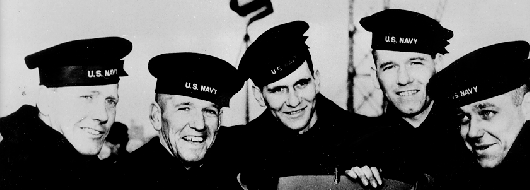
From Castletown.com:
The Sullivan family led lives much like other middle class families of the 1920s and 1930s. It was Depression time and Tom Sullivan was fortunate that he had a job. Not all of his children were able to finish high school. A few of the boys found it necessary to help out meeting the household expenses. The vacant lot next to their home provided space for various sports activities. Most of the family found work at the Rath meat packing plant. When the two oldest, George and Frank, returned home from a hitch in the Navy, all five Sullivan brothers were working together again, just as they were when playing sports on that lot next door to their home. The youngest, Albert was the first to get married. He and his wife Mary became parents when their son, James Thomas, was born on May 11, 1940. The other brothers would probably have done the same, but World War II got in the way. When reports were received about the death of their friend, Bill Ball, who was on the battleship Arizona when the Japanese attacked Pearl Harbor, they decided to enlist in the Navy. They did insist, however, that the Navy allow them to stay together throughout their service. The Navy agreed. On January 3, 1942, less than a month after Pearl Harbor, they were sworn in at Des Moines, and left for Great Lakes Training Center.
The five sons of the family all ended up stationed on the USS JUNEAU (CL-52), reporting aboard together on 02/03/1942, just 11 days before commissioning of this new ship in New York. The USS JUNEAU (CL-52) sailed to the South Pacific, after a hurried shakedown period in the Atlantic, where she was operating near the Solomon Islands, in support of the landing at Guadalcanal on November 12th, 1942:
From Wikipedia:
[..]
On 8 November Juneau departed Nouméa, New Caledonia, as a unit of Task Force 67 under the command of Rear Admiral R. K. Turner to escort reinforcements to Guadalcanal. The force arrived there early morning 12 November, and Juneau took up her station in the protective screen around the transports and cargo vessels. Unloading proceeded unmolested until 1405 when 30 Japanese planes attacked the alerted United States group. The AA fire was effective, and Juneau alone accounted for six enemy torpedo planes shot down. The few remaining attackers were then attacked by American fighters; only one bomber escaped. Later in the day an American attack group of cruisers and destroyers cleared Guadalcanal on reports that a large enemy surface force was headed for the island. At 0148 on 13 November Rear Admiral D. J. Callaghan’s relatively small Landing Support Group engaged the enemy. The Japanese force consisted of two battleships, one light cruiser, and nine destroyers.
[…]
From Castletown.com:
On the evening of November 12th, air reconnaissance discovered the approach of the Japanese task force. It was considerably larger than the American force. The transports fled and the warships prepared for the coming battle. Despite having radar, the American ships almost collided with those of the enemy. The engagement began about 1:45 A.M. There was no moon that night and there was instant chaos as searchlights suddenly illuminated the two adversaries at close range to one another. All ships unleashed their barrage of heavy armaments at point blank range. Within 30 minutes the engagement was essentially over. The Japanese lost a battleship and two destroyers. Five of the 13 U.S. ships had been sunk or were heavily damaged. Many men were lost, including the task force commander, Rear Admiral Callaghan. The Juneau had just barely survived, having received a torpedo hit on it’s port side which left a gaping hole and an almost severed keel.
[..]
At daybreak the surviving American ships huddled together and headed back to their base. Late that morning, a torpedo fired from a Japanese submarine, struck the Juneau near the storage area of its ammunition supply. “When the torpedo hit, there was a single explosion and the air was filled with debris, much of it in large pieces. The whole ship disappeared in a large cloud of black, yellow black, and brown smoke. Debris showered down among ships of the formation for several minutes after the explosion to such an extent as to indicate erroneously, a high level bombing attack.†Thus Captain Gilbert, the acting Commander of the task force, described what he saw when the U.S.S. Juneau was struck. The captain of the U.S.S. San Francisco, H.E. Shonland, reported that: “It is certain that all on board perished.†Captain Hoover decided that rather than delay the escape of the other ships, he would request that an Army aircraft in the area report the position of the Juneau. The pilot did send in a report but it did not get to the proper authorities. And, even more tragically, Captain Shonland was wrong — there were survivors from the Juneau. It was not known exactly how many made it into life rafts; there were at least 80. Among them was George Sullivan, the oldest brother.Gunner’s mate Allen Heyn was one of the survivors that was finally rescued from the sinking of the Juneau. He reported that there were 10 days of intense suffering as, one by one, the men succumbed to the intense heat, their wounds, and sharks. Many were badly burned and died a painful death. They became delirious from hunger and thirst. Heyn recalled how George Sullivan decided to take a bath one night. He took off all his clothes and swam around the raft. His movement attracted a shark…and that was the last Heyn saw of him. Only ten men survived the ordeal.
The US Navy too the issue of family members seriously after this incident and prohibited such stationing together. Some history of this outcome is here.
Two ships have been named to honor the five Sullivan brothers: DD-573 and DDG-68. THe first USS THE SULLIVANS (DD-537) is a museum ship in the Great Lakes at Buffalo, NY, berthed with the USS LITTLE ROCK (CLG-4).
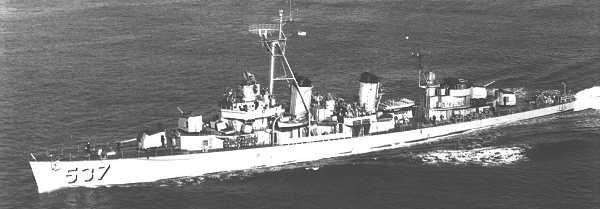
DD-537, of the FLETCHER Class, was commissioned 9/30/1943. She served through the many historical battles of the Pacific, earning 9 Battle Stars. Following WWII, THE SULLIVANS participated in the Korean War, conducting gunfire support operations. The USS THE SULLIVANS was later used as a “school ship” for Officer training in Newport, RI, before being transfered to New York City in the Naval Reserve. She was decommissioned 1/7/1965. The link at the beginning of this paragraph contains some very detailed accounts of the WWII actions, and a not of her patrols to try to locate the USS THRESHER (SSN-593) in April, 1963.
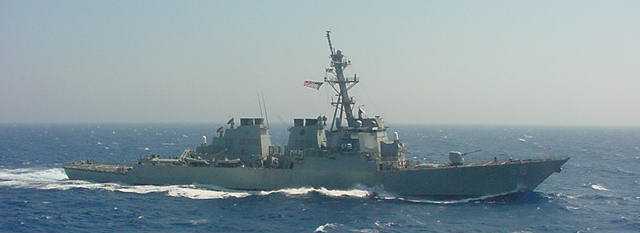
The motto of the current USS THE SULLIVANS is the motto of the Sullivans Brothers: “We stick together!”
Category: Maritime Matters, Military, Military History, Navy | 2 Comments »
August 11th, 2007 by xformed
Hey, it’s the 11th of the month again. Why is that important? It’s important because I have chosen to highlight the ValOUR-IT project on the 11th of each month. It could have been any day of the month that I do this, but I chose it because of Veteran’s Day, as it is a project that very directly benefits the veterans of today.
A few days back, I linked to the most recent news on ValOUR-IT from FbL’s report of the Circuit City, that is using it’s economic muscle to make sure the donated dollars are stretched further. Toss in the San Antonio Area Foundation grant of $150K….it’s getting better each day, but not without effort.I do have a bleg for the day: Bloggers, please pick two things. One is a troop support charity that resonates with you, and two, a day of the month to make a post about the program. That link to charities is one I try to list the ones I run across, and there are certainly more of them, but start somewhere finding one!Patti Bader told us at the 2007 MilBlogging Conference that every time Soldier’s Angels is mentioned, money moves into the charity. How about helping to reduce the friction to make the funding flow by helping to remind people of great ways to help out?You just never know when that random visitor who has never heard of your charity might wander by your blog that day of the month you took a few extra minutes to make one of 12 posts during the year.
Category: Charities, Military, Supporting the Troops, Valour-IT | Comments Off on Monthly Reminder: ValOUR-IT